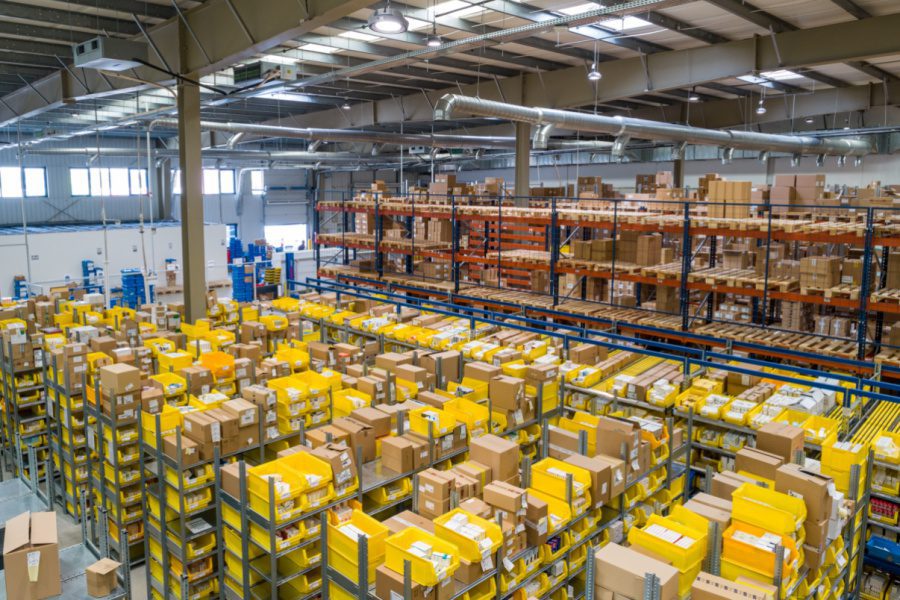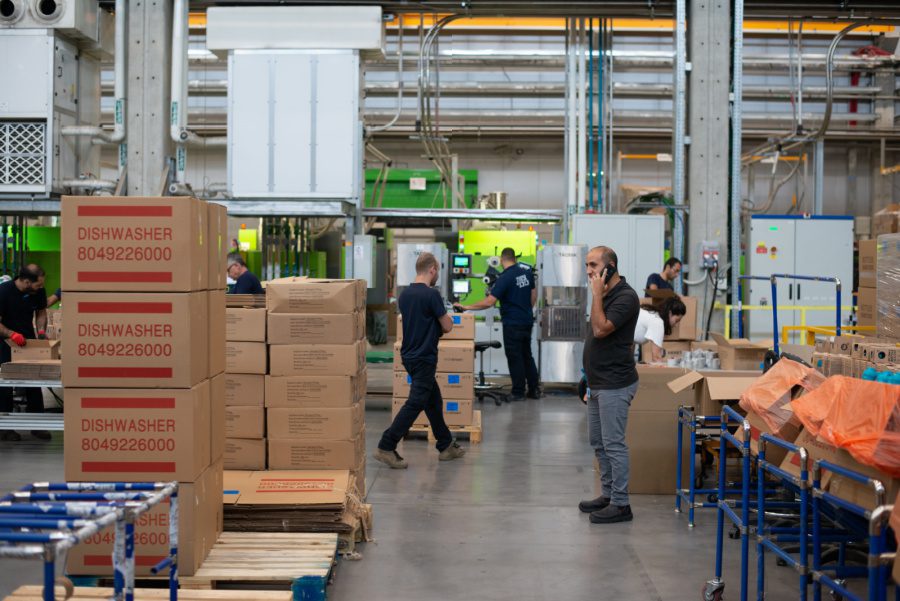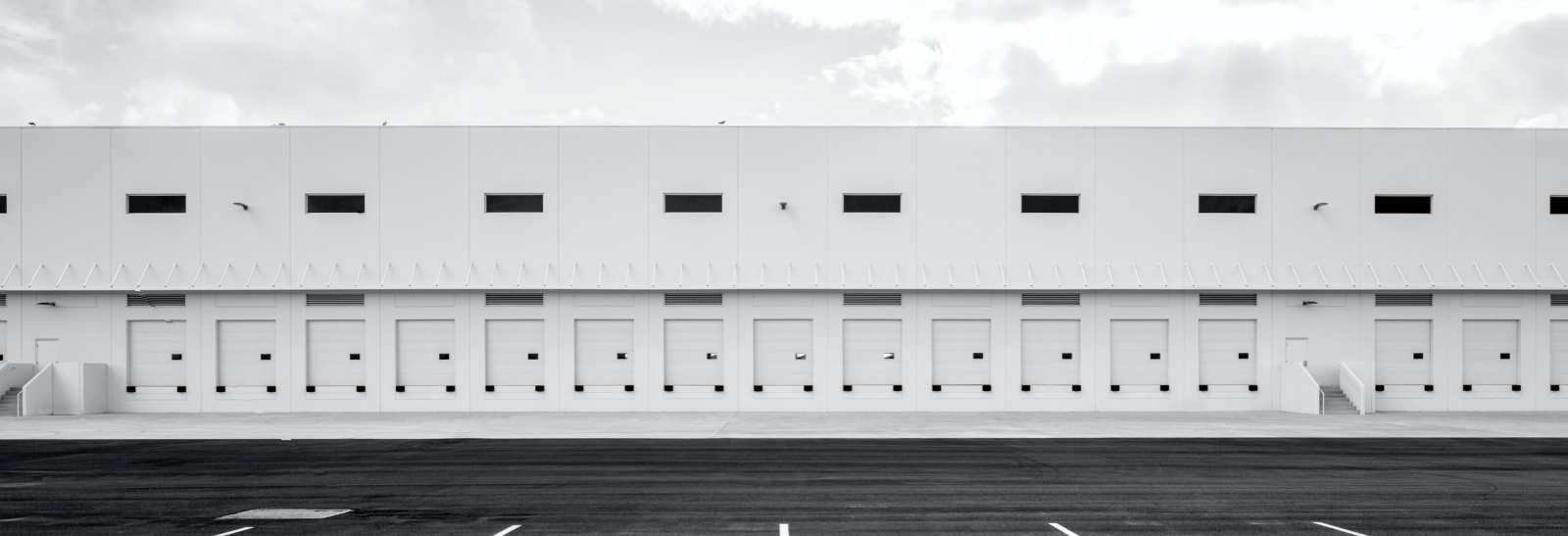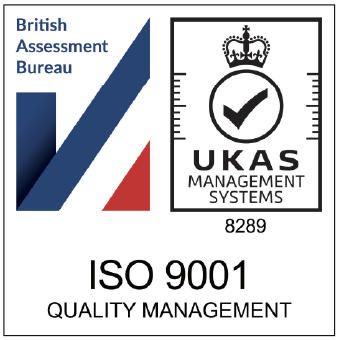If your eCommerce business is starting to grow to the point that you can’t handle all of the orders yourself, then it might be time to scale your shipping, warehousing and fulfillment processes. All of which may require you to use warehouses and fulfillment centres. But, what exactly are these things? And, what’s the difference between them? Keep reading to find out.
Why do I need a warehouse or fulfillment centre?
Before we take a look at fulfillment centres and warehouses and the differences between them, let’s first understand why an eCommerce business would need to use them in the first place.
Warehouses and fulfillment centres act as the foundation of a supply network.
At their most basic, they provide you with somewhere to store all of your products/inventory. But, as we’ll see later, depending on whether it’s a distribution or fulfillment centre, there are a variety of other things they can do.
What is a warehouse?
A warehouse is usually a large building that is designed to store inventory in bulk.
Look inside your typical warehouse and you will see forklifts, large industrial shelves piled high with goods and generally plenty of workers in high-viz jackets.
For many eCommerce retailers, it’s more cost effective to lease warehouse space on a joint basis with other eCommerce companies – or to use a warehousing provider on their behalf.
With a warehouse you get somewhere to store your stock – but that’s about it. When you make a sale to a consumer or another business, it’s up to you to pick, pack and ship your orders.
You’ll have to either do this from the warehouse directly, or you’ll need to regularly collect inventory from your warehouse and then fulfill the orders from your home or office.
As you can imagine, this isn’t exactly efficient, which is what led to the development of fulfillment centres…
What is a fulfillment centre?
A fulfillment centre is essentially a warehouse, but with a whole range of fulfillment services tagged on.
Fulfillment centres are generally run by a third-party logistics provider (also known as a 3PL).
A fulfillment centre run by a 3PL not only stores an eCommerce retailer’s stock, but also fulfills orders on their behalf. Fulfillment centres have grown in popularity in recent years as they provide a complete end-to-end solution for eCommerce retailers.
Fulfillment centres remove the burden of having to receive, store, pick, pack and fulfill products. By allowing logistics professionals to take care of these things via a fulfillment centre, eCommerce businesses can focus more on their core objective – marketing and selling their products.
What’s the difference between a warehouse and a fulfillment centre?
On the face of it, warehouses and fulfillment centres are both large buildings in which inventory is stored, but as you’ve probably already picked up, there are several important differences between the two.

The main differences are outlined below:
Storage
Sure, both warehouses and fulfillment centres store inventory – but there’s a key difference in the way that they store it – duration.
Warehouses are typically used for long-term storage. For example, if a garden furniture retailer chooses to buy stock on a yearly basis, they will use a warehouse to store the stock until it is ready to be sold.
Fulfillment centres on the other hand turnover inventory quickly. Inventory does not normally sit in a fulfillment centre for longer than a month (and is usually there for much less time).
Some larger eCommerce retailers will use both a warehouse and a fulfillment centre within their supply chains. The majority of their inventory will be stored in a warehouse, before being sent to a fulfillment centre as orders are received.
Operations
Warehouses and fulfillment centres are operationally very different. Warehouses tend to be slower moving environments in which inventory is received and shipped out in bulk, with few other services taking place.
A fulfillment centre is a much faster moving environment in which inventory is received, quality assessed, stored (for a brief period of time), picked, packed and shipped out to customers. As you can imagine all of these services involve more staff and a much higher throughput of inventory.
Shipping
We’ve already alluded to this point, but there is a significant difference in the frequency and volume of shipping that takes place between a warehouse and a fulfillment centre.
A warehouse may receive large bulk orders via road transport or rail on a monthly basis. This bulk inventory may then sit in the warehouse for months at a time before being sent to a brick and mortar store, or sent in smaller batches to fulfillment centres.
A fulfillment centre meanwhile will usually receive inventory on a weekly, if not daily, basis with couriers and other shipping firms turning up throughout the day to ship completed orders to customers.
How do fulfillment centres work?
Fulfillment centres basically take care of everything from the point an order has been placed with an eCommerce retailer online, to the package arriving at the customer’s doorstep.
The fulfillment process generally looks something like this:
- Goods are received into the fulfillment centre.
- The inventory is quality assessed and then stored.
- Orders are received via an eCommerce store.
- The items for the order are picked and packed according to the eCommerce store’s requirements.
- The order is then shipped from the fulfillment centre by a shipping company to the customer.
- Any returns are also processed by the fulfillment centre (with the items returned to inventory if suitable).
Some fulfillment centres also offer other value-added services such as customer service (e.g. running call centres on behalf of their eCommerce clients), delivery tracking and notification and subscription box fulfillment etc.
If you’re running an eCommerce store it’s clear that compared to a traditional warehouse, fulfillment centres offer a complete solution for your order fulfillment.
What are the benefits of using a fulfillment centre?
In case you’re not fully convinced that you should be using a fulfillment centre to fulfill the orders from your eCommerce store, here are a few more benefits of using fulfillment centres.
Go global
As anyone who has tried will tell you, fulfilling international orders can be a pain.
But, with more than 2 billion people now shopping online worldwide, it can pay to offer international shipping.
Choosing a fulfillment centre that has an international network and global shipping partners means you can suddenly sell your products to many more people, but with none of the hassle.
A good quality fulfillment centre will have plenty of experience in shipping goods globally and will have a solid understanding of the various tax and regulatory hoops you’ll need to jump through.
Free up space
Many eCommerce businesses start in a garage, basement or bedroom. But, as the business grows, space can quickly become an issue.
By working with a fulfillment centre you can free up much needed space in your home or office.
In fact, you can probably cut out dealing with your inventory altogether. Many fulfillment centres are happy to receive finished goods directly from manufacturers. So you can get your suppliers to send your products directly to your fulfillment centre which can then send them out to your customers.
Expertise
Let’s face it, you might be great at running an eCommerce store, but it’s unlikely that you’re a logistics expert too.
By using a fulfillment centre you benefit from potentially decades of logistics and transport expertise. In addition to having experienced staff, fulfillment centres have usually invested in specialist equipment, software and have developed relationships with shipping companies over many years.
All this means they can fulfill your products in a timely, efficient, cost-effective way.
When it comes to fulfillment, leave it to the experts!
Scale
With a team of dedicated experts handling your fulfillment, you’ll also be in a better position to scale your eCommerce business.
Remember, in the world of eCommerce customers expect rapid fulfillment of their orders. If you’re trying to scale your business and continue to handle all of the orders yourself, it’s almost inevitable that something will go wrong at some point, disappointing customers and damaging your reputation.
By using a fulfillment centre you’ll be in a much better position to handle larger volumes of orders or seasonal peaks.

Economies of scale
If you want to handle your own fulfillment then you’ll need to invest in warehouse space, shipping partners, staffing, software and much more.
Instead, you can partner with a fulfillment centre and thereby benefit from economies of scale.
Because fulfillment centres are often dealing with multiple eCommerce stores they can invest in large warehousing space, have great bulk deals with shipping partners and much more. In other words, they operate via economies of scale – which you will benefit from!
Customised orders
How have you been sending your products to customers so far? We’re willing to bet it’s mostly in generic packages; brown boxes, padded envelopes, that kind of thing…
Well, a good quality fulfillment centre will give you the option of sending your orders in custom packaging. They will take your inventory and pack it for you in custom packaging before it is shipped to the customer.
In today’s highly-competitive retail environment, seemingly small touches such as customised packaging can go a long way to building customer loyalty.
Focus on what matters
When you set up your eCommerce store it’s unlikely that one of your passions was supply chains and logistics. But, as your store grows, you’ll find that more and more of your time is taken up with it.
Instead of focusing on your next big product launch or tinkering with ways to improve your conversion rate on your website, you’ll end up taking calls from disgruntled customers because their order hasn’t turned up.
Using a fulfillment centre takes the headaches of supply chain and logistics away from you – so you can focus on what matters – growing your eCommerce business.
Improve your customer service
Are you able to answer the phone to customers at any time of day? Do you have the tech to provide real-time delivery tracking notifications? If not, then you’ll probably benefit from partnering with a fulfillment centre.
As the old saying goes, “it’s easier to keep an existing customer than gain a new one”. By using a fulfillment centre that’s able to provide customer services such as telephone support and delivery tracking, you’ll be improving the odds of retaining customers and building a loyal customer base.
Outsource your fulfillment today
If you’re still doing your own fulfillment, it’s probably time to start thinking about outsourcing it to a dedicated fulfillment partner like 3PL.
We have years of (award winning!) experience providing multi channel eCommerce fulfillment to leading brands. If you’d like to see how 3PL can transform your eCommerce store’s fulfillment, contact us today.
Speak to 3PL today and discover how your fulfillment can be transformed
Read more eCommerce fulfillment and logistics advice on the 3PL blog…
Do I Need a Specialist Fulfillment Centre for My Product? | What Are the Key Factors to a Successful eCommerce Order Fulfillment Process? | Faults in Your Fulfilment Could be Costing You Money. Here’s How to Fix It
Speak to 3PL about your eCommerce order fulfiment
It’s time to supercharge your ecommerce brand business and overtake your competitors. Speak to 3PL today and find out how we can take your ecommerce fulfilment to the next level.


